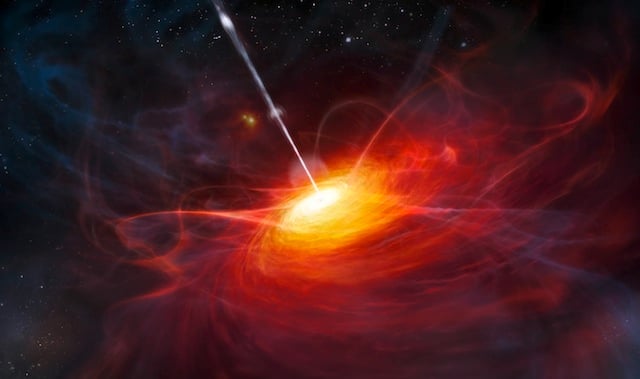The thing about black holes is that they are very dense. If we took the entire 2,000,000,000,000,000,000,000,000,000,000 Kg of the Sun (This is the real mass of the Sun) and turned it into a black hole, it would be about 6 Km in diameter.
It is theorized that there are around 100 Million Black holes in the Milky Way Galaxy alone. But if they aren’t near a large reservoir of gas and dust, with their small size they are pretty harmless and invisible. The only way we could find them would be through their gravitational influence, which is hard to detect among the galaxy’s hundreds of billions of stars.

The real black holes that we associate with movies and popular culture are the monsters that reside in the centres of galaxies. They have masses that are millions of times that of the Sun. We can see where these black holes are by looking for their incredible gravitational signature and the high energy photons released from their blazing hot accretion disc. These are the ones that have survived for billions of years, feeding off their dense environment.
But there is a class of black holes that outweighs even these galactic monsters. The objects are known as quasars. These are distant galaxies whose luminosity is up to 100 times that of the entire Milky Way. Their brightness is due to a super massive black hole whose accretion disk is so bright and so hot, it easily outshines its host galaxy. Most Quasars are between 600 Million and 28 Billion light years away. Their properties and formation have been studied and astronomers have had a good grasp on how they’ve evolved since the Big Bang….until now.

Astronomers from Peking University in China and from the University of Arizona have discovered an incredibly massive black hole that formed earlier in the history of the Universe than current theories can predict.
The Quasar, known as SDSS J0100+2802 (discovered using data from the Sloan Digital Sky Survey), is one of about 40 quasars that exist in the same early epoch, around 900 Million years after the Big Bang. The difference is that its much larger than any of the others, weighing in at nearly 12 Billion solar masses and having a Luminosity of 420 Trillion Suns!
“How can a quasar so luminous, and a black hole so massive, form so early in the history of the universe, at an era soon after the earliest stars and galaxies have just emerged?” says Xiaohui Fan, Regents’ Professor of Astronomy at the UA’s Steward Observatory. “And what is the relationship between this monster black hole and its surrounding environment, including its host galaxy?
To determine the distance and mass of the black hole after its discovery in the SDSS catalogue, two telescopes in southern Arizona imaged the object: the 8.4-meter Large Binocular Telescope, or LBT, on Mount Graham and the 6.5-meter Multiple Mirror Telescope, or MMT, on Mount Hopkins. Additional observations with the 6.5-meter Magellan Telescope in Las Campanas Observatory, Chile, and the 8.2-meter Gemini North Telescope in Mauna Kea, Hawaii, confirmed the results.

The Quasar exists at a time known as the ‘epoch of re-ionization,’ where the Universe was transformed into what we see today. It is changing our ideas of how quickly black holes form, and tells us that we need to re-examine our theories of black hole formation in the early Universe. It can be difficult to study the Universe at such an early time, but we have done pretty well with what we’ve got.
The enigmatic black hole, being the most extreme object in our Universe, can help us unlock the deepest secrets of space and time, and help us understand the vast emptiness from whence we came. We may never find the absolute answers to the biggest questions, but as long as human ingenuity and a thirst for adventure prevail, we will never stop trying.
